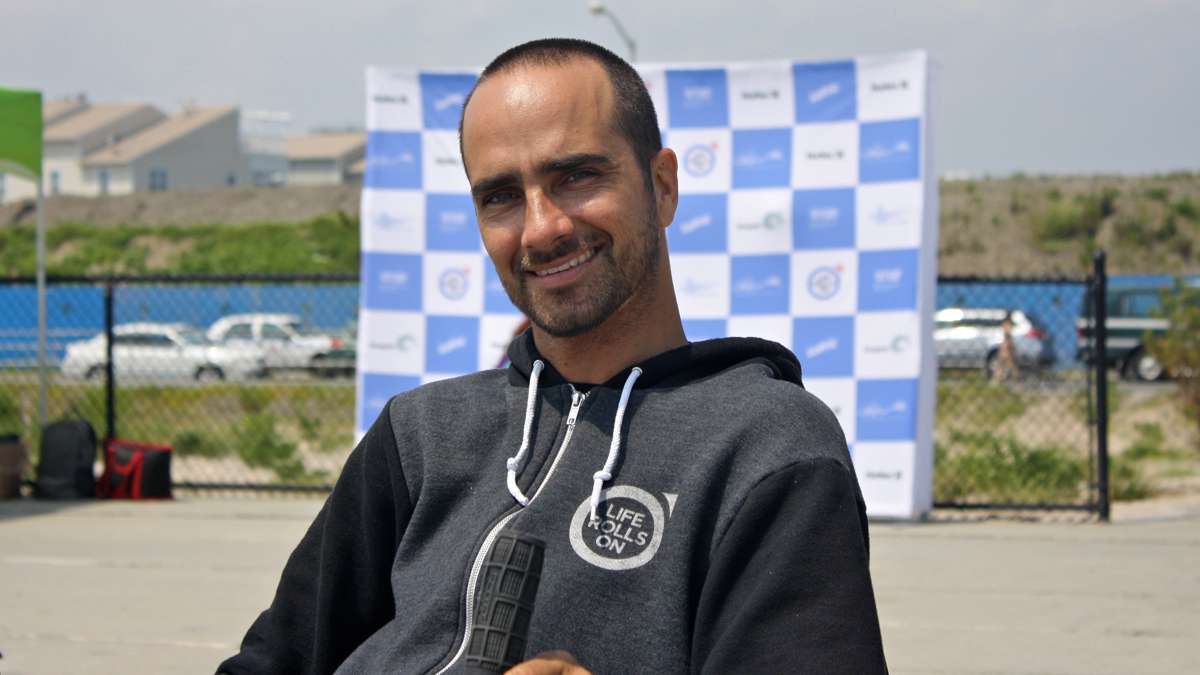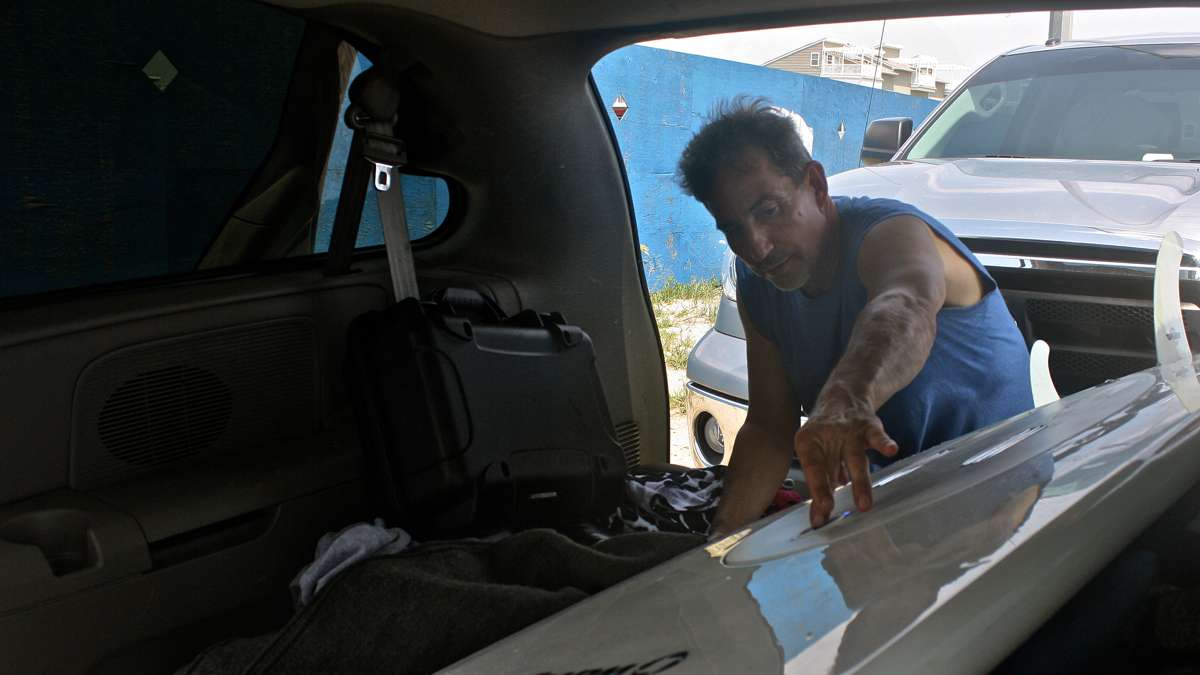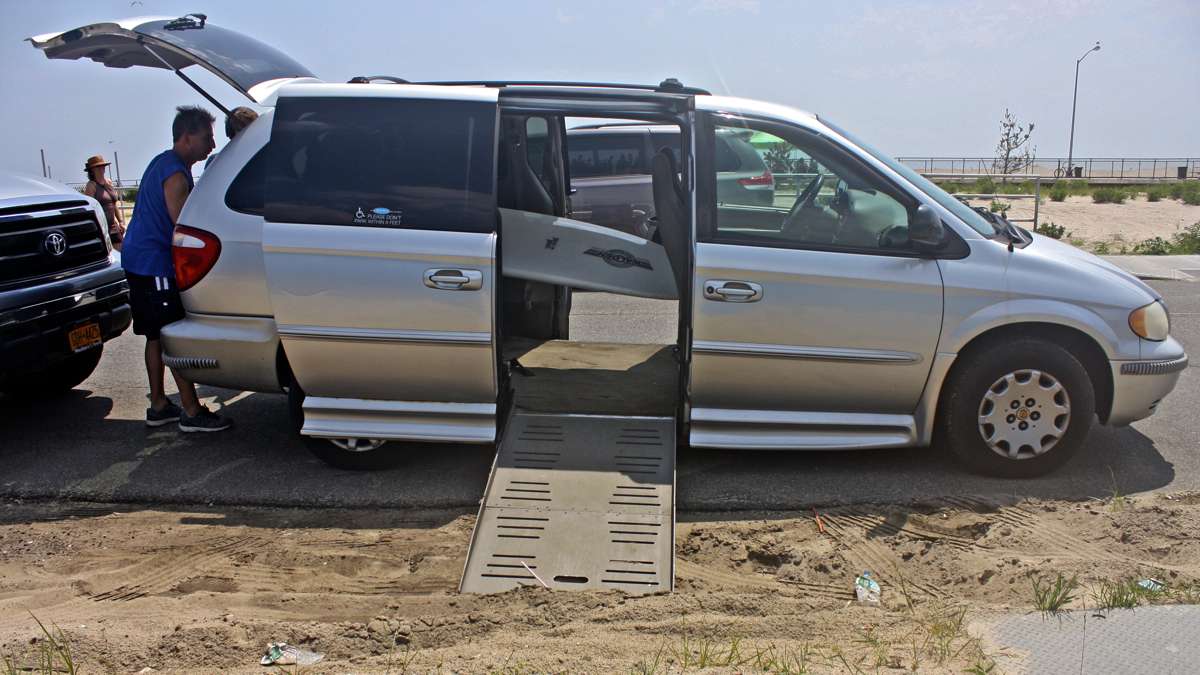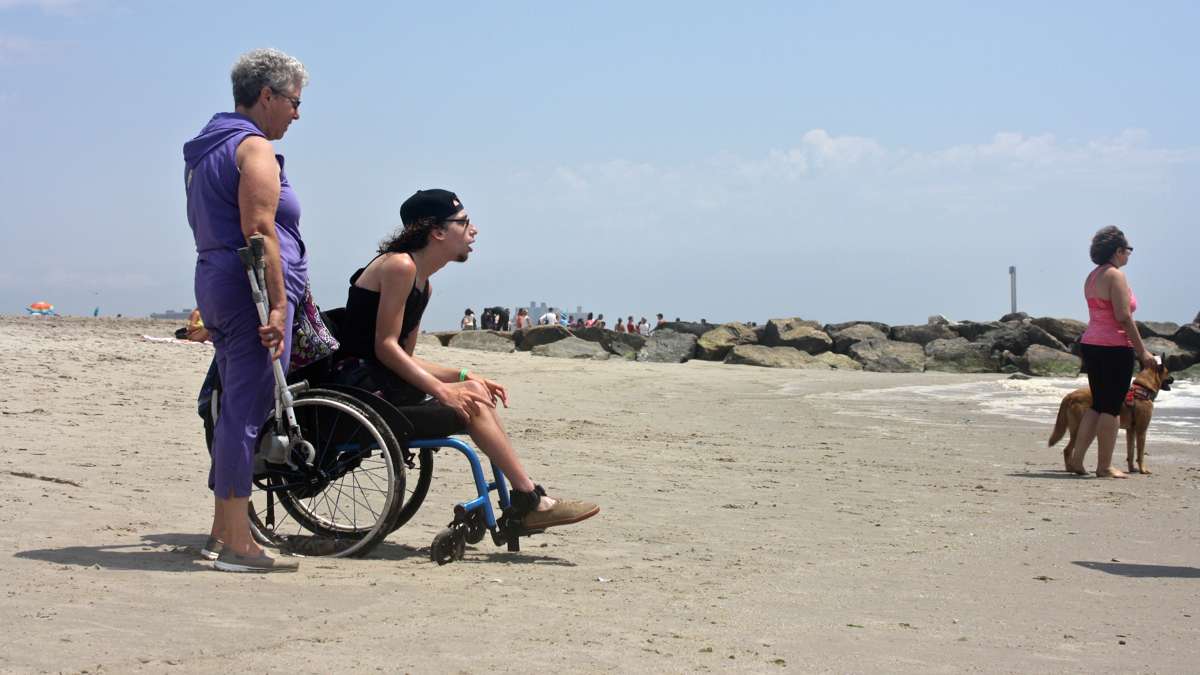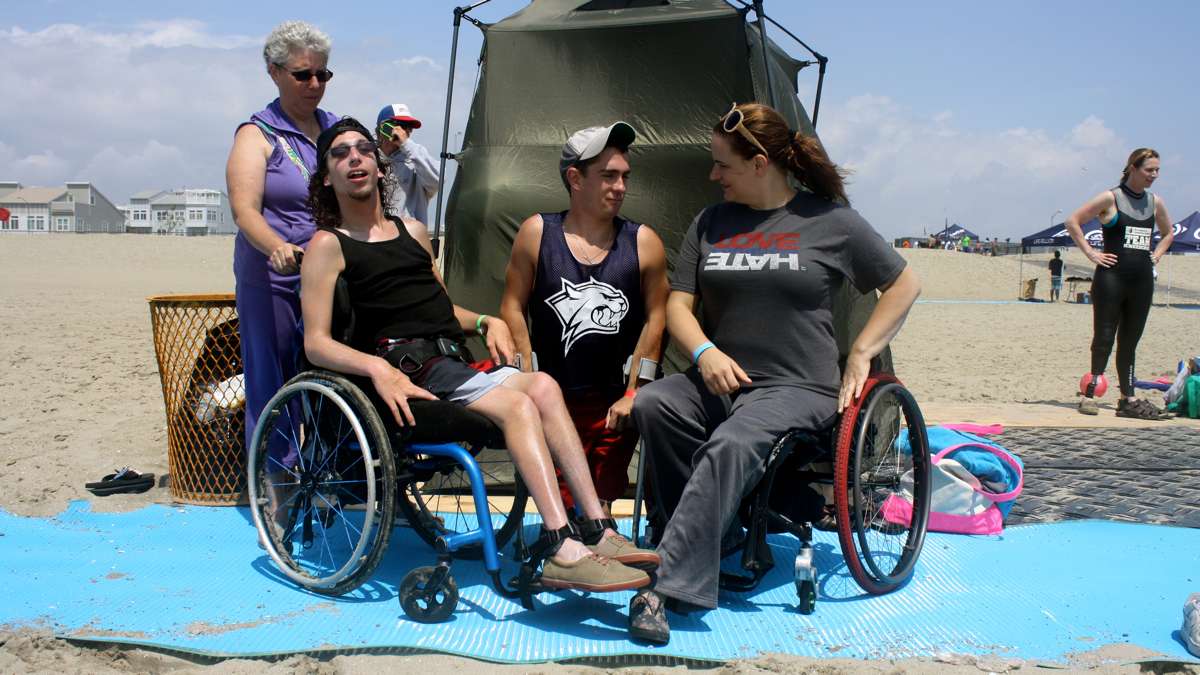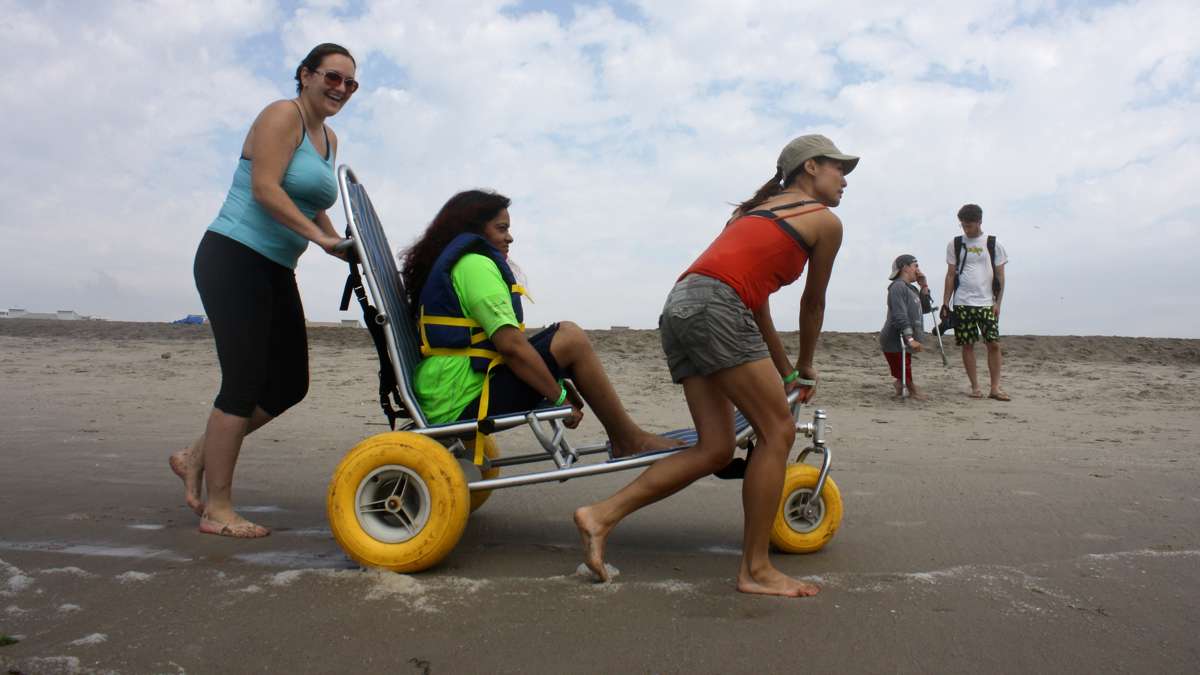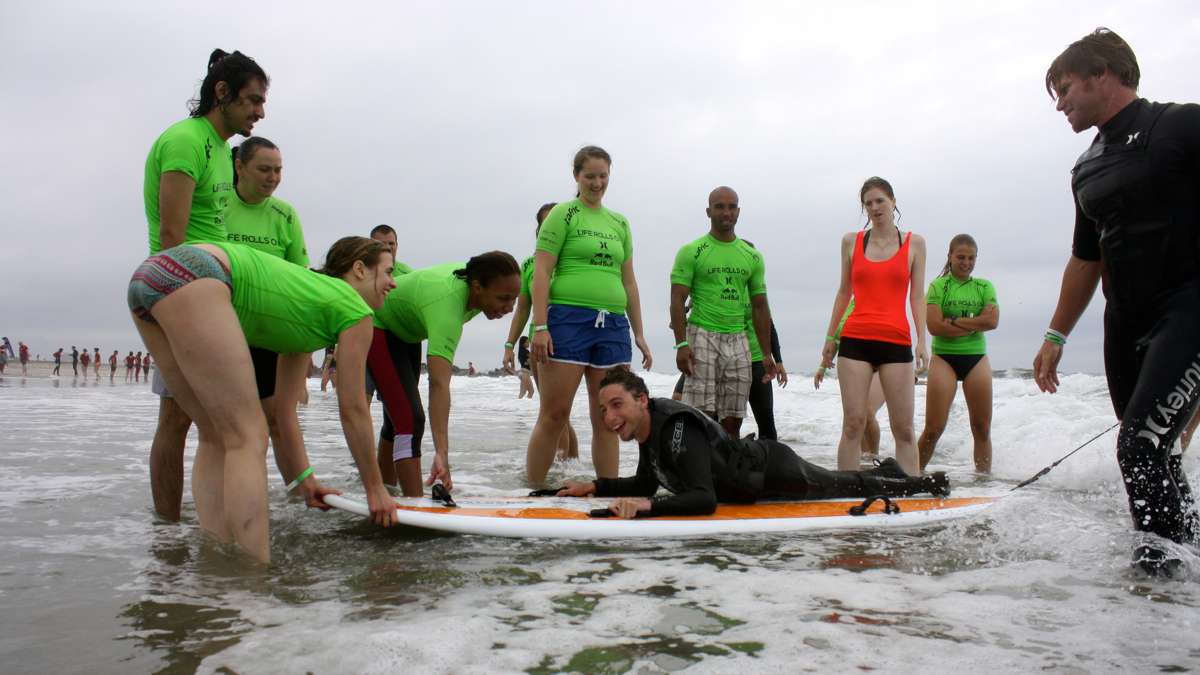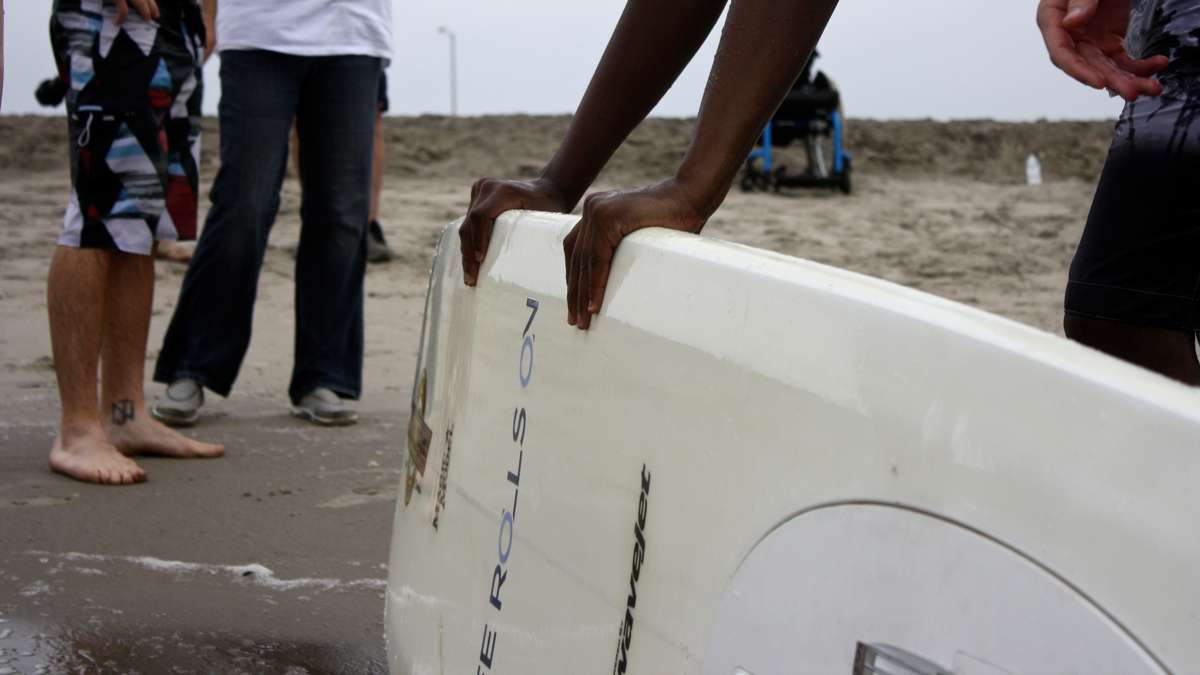New surfboard technology opens lineups to paraplegic surfers
ListenHalf jet ski, half surf board, all fun.
If you think that a sandy beach isn’t wheelchair accessible or that surfing is only for people who can stand, tell that to the group of paraplegic surfers catching waves all day last week at Rockaway Beach in New York. In recent years, surfing has emerged as a recognized, and even prescribed, therapy tool for people attempting to overcome all sorts of injuries — from PTSD to severed spinal cords. The result, for many, is pure stoke.
“So stoked! It was so mental out there! In the ocean, forget about it, I love it. I love it!“
That’s Adam Halpern of Long Beach, New York. A car accident 10 years ago left him paralyzed from the waist down, but today he’s laying on the sand, waves rolling over him, smiling from ear to ear. In waist-high surf, with the help of a platoon of volunteers, he just got barreled — riding inside the tube formed by a breaking wave. As you can imagine, he’s psyched.
That fantastic moment was made possible with the help of Life Rolls On, an organization that hosts events at beaches around the U.S., giving paraplegic surfers the chance to get out of their wheelchairs and onto a board. Along with 60 other surfers at Rockaway on Sunday, in choppy surf and under the threat of rain, you simply could not wipe the smile off of Adam’s face if you tried.
Jet-ski technology in the right hands
The technology behind all the good vibrations is the WaveJet propulsion motor built into Adam’s nine-foot longboard. The custom-built board lets surfers like Halpern catch a wave without a push.
“[The board] has a jet propeller on the bottom of it,” he says. “It’s jet-ski technology—you just hit a button on a watch, and it takes you through the whitewater. So I’m able to catch waves on my own. It’s the sickest feeling ever.”
Mike Railey is the man who invented the WaveJet technology. His interest in big-wave, tow-in surfing led him to the idea of a motorized surfboard that would help its rider catch waves in adverse conditions. But making it into a working board took nearly 14 years of tinkering with the design in his garage. “With a surfboard you have that three inches or less of thickness we had to get into,” Railey says, listing just a few of the challenges of creating a self-powered surfboard. “You have to have the battery lightweight. That’s such an issue keeping the weight down. Of course putting electronics in saltwater is crazy.”
But Railey didn’t know his WaveJet’s potential until he saw it in the capable hands of Jesse Billauer.
“Once Jesse came down and tried the product and saw what he could do with it and we got involved with Life Rolls On, that’s when we realized how many adaptive athletes are out there and that they do need special equipment to allow them to do what they love,” said Railey.
Adaptive surfing
Life Rolls On’s founder, Jesse Billauer, has been spreading inspiration for years. A pro surfer until a wipeout at age 17 left him with a severed spinal cord, Billauer started Life Rolls On in 1999. He has since become the Kelly Slater of the adaptive surfing community — surfing waves of consequence and building an army of inspired admirers. “Adaptive surfing” refers to the method that someone with a disability uses to still surf — laying on their stomach, using a special board, or whatever it takes to have the kind of experience that many in wheelchairs thought would never be available to them.
And the inclusion of the WaveJet boards in Life Rolls On events has made it possible for more and more handicapped surfers to take to the lineups, and the boards have freed experienced surfers like Billauer to take control of their own destiny in the surf, instead of simply relying on a support crew to catch waves. It used to take eight of Jesse’s friends to help him get out into the line-up. Now Jesse tows them out.
“It’s really, really good for people with disabilities that can’t paddle, can’t walk, the jet just helps them get out into the lineup, into the waves,” says Billauer. “With my WaveJet board, I can surf 10- to 15-foot waves in Hawaii. I still go pretty wild.”
Railey said Jesse will call him before a go-out in huge swells — conversations that always make the board builder a bit nervous.
“I’m like, ‘Are you sure?'” he laughs. “He goes out there and surfs huge waves again, and he’s so excited to be able to do what he loves.”
The custom boards cost about $4,000, but Mike said many adaptive surfers raise the money for one through campaigns like Go Fund Me. From the scene at Rockaway, it seems like they’re making an impact. One surfer said it best from his chair parked on the beach, as Jesse rolled by.
“Hey Jesse!” he yelled to Billauer. “Thanks for the day, man. It was everything.”
—
Looking for a “Life Rolls On” adaptive surfing event closer to the Philadelphia region? Moss Rehab sponsors a yearly event in Wildwood, New Jersey.
WHYY is your source for fact-based, in-depth journalism and information. As a nonprofit organization, we rely on financial support from readers like you. Please give today.



